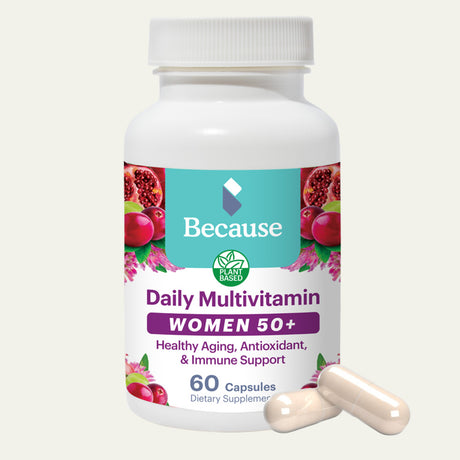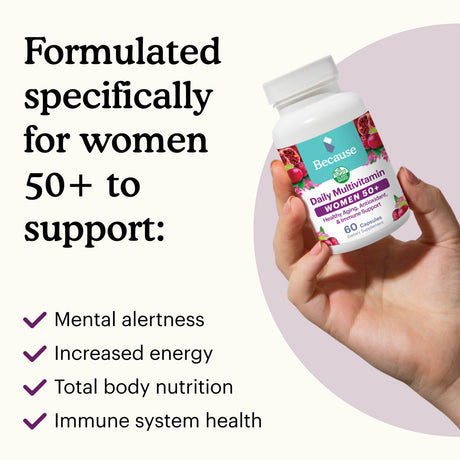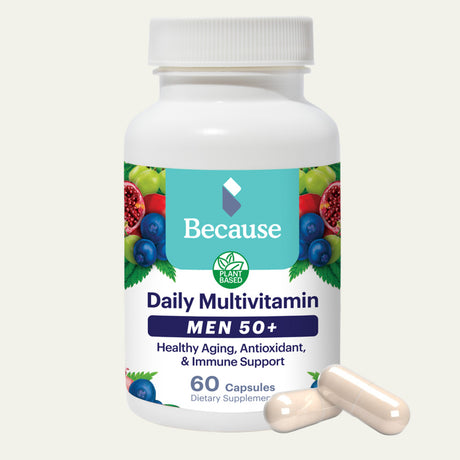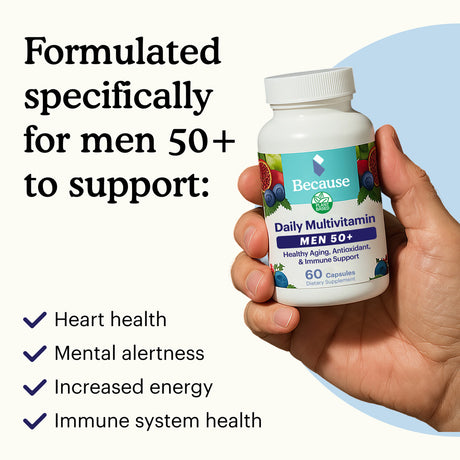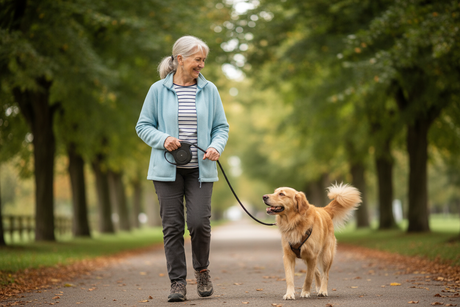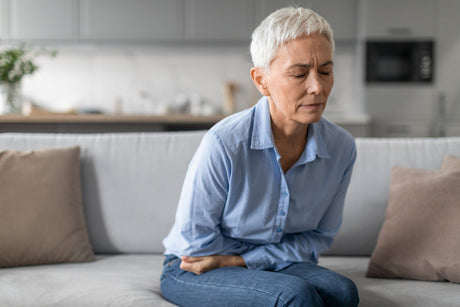An estimated 70% of people aged 50 to 80 suffer from occasional joint pain. If you experience knee pain, you know how it can lead to mobility problems that make it challenging to keep up with your daily routine. A great workout performed consistently may help reduce pain and improve the range of motion. In this article, we'll explore why and share some exercises you can do to support healthy knee joints.
The Benefits of Knee Exercises Over Time
Regular exercise can lead to the following benefits for people with bad knees:
- Less pain: Knee and leg exercises can strengthen the muscles that support your joints, reducing pain-causing pressure over time.
- Improved mobility: Stronger muscles can gradually expand your range of motion to benefit your mobility.
- Weight management: Exercise may help you lose or maintain a healthy weight. Carrying even an extra pound or two puts more pressure on the knee joints, worsening pain.
- Increased balance: Strengthening your muscles can help you maintain balance, making you less likely to fall.
- Confidence boost: As your abilities increase, you'll likely feel a sense of pride and accomplishment.
Common Causes of Knee Pain as You Age
A number of conditions can lead to knee pain. In older adults, the following are the most common causes:
Arthritis
Arthritis is a blanket term for many conditions that cause inflammation of the joints. Roughly 22.7% of adults in the U.S. have arthritis. Although the different types of arthritis have varying causes, they produce similar symptoms: inflammation that results in pain and stiffness.

In older adults, osteoarthritis is most commonly associated with knee pain. Knee osteoarthritis occurs when the protective padding for the joints, known as cartilage, begins to break down. This condition gradually worsens, leaving the joints less insulated.
Rheumatoid arthritis is another cause of knee pain. It occurs when the immune system attacks the lining of the joints, leading to inflammation and swelling. Over time, the inflammatory response can break down cartilage and bone.
While there is no cure for arthritis, medications, surgery, and lifestyle changes can help control symptoms.
Injury
Older adults are more susceptible to injuries due to fatigue, muscle strength loss, or mobility and balance problems. A minor fall could result in a severe injury, and you're more likely to strain or pull a muscle while completing everyday activities. Fractures, strains, sprains, tears, and dislocations in the knee area can lead to severe pain. Because older adults typically heal more slowly, discomfort related to an injury may persist for weeks or months.
Getting prompt medical treatment following an incident may reduce the risk of long-term injury. Depending on the nature of the problem, you may need to see an orthopedist or orthopedic surgeon for treatment.
Under or Overuse
Not getting enough physical activity is a potential cause of knee discomfort. The connective tissues that support the knee may grow stiff, making simple movements painful and difficult. A lack of exercise can also cause the leg muscles to grow weak.
At the same time, overuse can also spark knee pain. You may experience this pain when you've been more active than usual. Exercise that jars the knees, like running, may also result in overuse-related pain.
Knee Strengthening Exercises for Seniors with Bad Knees
Strength training is the best way to build muscle and increase flexibility to help you complete daily activities more efficiently. The U.S. Centers for Disease Control and Prevention (CDC) recommends that older adults complete at least two weekly strength training workouts. This doesn't mean you must start weight training in the gym; you can complete gentle exercises at home to strengthen the muscles that support your knee joints. The following are some of the best knee-strengthening exercises to include in your workouts:
Seated Knee Extensions
Because they’re simple to complete, seated knee extensions are a great exercise for beginners. As you build muscle strength, you can also increase difficulty using a resistance band. To complete the activity:
- Sit in a chair with your back straight and both feet flat on the floor.
- Raise your left foot off the floor while keeping your back straight and your upper body still.
- Extend your left leg out in front of you.
- Hold your leg in the outstretched position for 1 second.
- Slowly lower your foot back onto the floor.
- Reposition your feet so they are both flat.
- Raise your right foot.
- Extend your right leg out in front of you.
- Hold your leg in the outstretched position for 1 second.
- Slowly lower your foot back onto the floor.
- Repeat 10 times. Gradually build up to three sets of 10.

Wall Squats
If you don't have balance problems, wall squats are a great way to build upper leg and glute strength while also targeting your knees. Here's how to do them:
- Place your back against a sturdy flat surface, preferably a wall.
- Place your arms at your sides and let them hang loose. Position your feet shoulder-width apart.
- Bend your knees and slowly lower yourself down.
- Keep your toes pointed forward, your hips even, and your back against the wall as you move.
- Hold the squat for 3 to 10 seconds. It's normal to feel a burn in your muscles.
- Slide yourself back up to a standing position.
- Repeat ten times. Gradually build up to three sets of 10.

If bending all the way proves too difficult, try doing partial squats first. You can work your way into full squats as the exercise becomes easier.
Standing Hamstring Curls
Standing hamstring curls build muscles in your hamstrings and work the joints to benefit people with knee problems. To try this exercise:
- Stand with your feet hip-width apart, and toes placed forward.
- Place your hands on the back of a sturdy chair.
- Shift your weight onto your left foot.
- Slowly bend your right knee, raising the heel of your right foot toward your buttocks.
- Keep your thighs parallel and your back straight as you move.
- Continue until your knee is fully bent.
- Slowly lower your foot.
- Repeat 12 to 15 times.
- Shift your weight to your right foot and repeat with the left leg.
Side Steps
Side steps enhance balance and mobility and are a convenient exercise because they require no equipment. You can increase the difficulty by wearing ankle weights as these leg exercises become easier. To add them to your workout, follow these instructions:
- Assume the starting position by placing your feet hip-width apart and letting your arms hang at your sides.
- Lift your right foot and step to the right side, so your legs are spread widely.
- Lift your left foot and bring it to meet your right foot.
- Reposition your feet hip-width apart.
- Lift your left foot and step to the left side.
- Bring your right foot to meet your left foot.
- Repeat 10 to 12 times. Gradually build up to three sets.

Step-Ups
Step-ups work your lower body and provide low-impact cardio benefits. You'll need a riser, a step, a curb, or something else sturdy. If you have concerns about balance, it's a good idea to have someone spot you when trying this exercise.
- Stand with your back straight and your hands on your hips.
- Keep your abdominal muscles engaged through every step to help maintain balance.
- Lift your right foot and place it on the riser.
- Lift your left foot and place it on the riser.
- Take a moment to regain your balance.
- Lift your right foot and place it on the floor.
- Lift your left foot and place it on the floor.
- Switch legs by lifting your left foot and placing it on the riser.
- Lift your right foot and place it on the riser.
- Take a moment to regain your balance.
- Lift your left foot and place it on the floor.
- Lift your right foot and place it on the floor.
- Repeat 5 to 6 times. Gradually build up to three sets.

Calf Raises
Calf raises are one of the best exercises for those with knee function problems because they build up the muscles that support the knee joint. You can complete this exercise in two ways. For beginners, try this:
- Stand with your feet together and hands on your hips.
- Slowly roll your weight toward your toes while lifting your heels off the floor.
- Hold for three seconds, and then lower your heels.
As your fitness level increases, you can progress to the more advanced version that again requires a riser — such as a curb, an exercise stool, or a step. Having a spotter when you first add this exercise to your regular workout routine is a good idea. To try the advanced calf raise:
- Stand on the riser with your heels hanging slightly off the back edge.
- Slowly roll your weight forward to your toes while lifting your heels.
- Gradually lower yourself, letting your heels sink lower than they were in your starting position.
- Return your heels to the starting position.
- Repeat ten times. Slowly build up to three sets of 10.

Yoga
Yoga is a form of exercise that originated in India. It involves moving through a series of poses that require you to bend and stretch while maintaining a steady flow of breath. Regular yoga practice may help improve posture and flexibility while strengthening arms, legs, shoulders, upper and lower back, and core. Not only does yoga work out the entire body, but it also can be a great way to destress.

To start with yoga, you can look for classes in your area. Many senior centers, community centers, hospitals, and yoga studios offer yoga classes specifically for seniors. You can also look for online videos or live-stream classes.
Best Cardio Exercises for Seniors with Bad Knees
Strength training exercises are just one part of a workout. Cardio exercise is essential for overall health and well-being. The CDC says seniors should strive to get 150 minutes of moderate-intensity exercise weekly. Regular cardiovascular exercise improves circulation and blood flow and can help you reach or maintain a healthy weight. Some cardio exercise ideas are for supporting physical health and healthy joints.
Swimming and Water Aerobics
Swimming and water aerobics allow you to build strong muscles, work your joints, and raise your heart rate. Working out in water also eliminates worries about balance issues or slip-and-fall accidents. Check your local area for public pools that offer discounts and special classes for seniors.
Walking
Lacing up your sneakers and heading out for a brisk walk is an effective way to get cardiovascular exercise. When starting, try walking on a track or in a mall where the terrain is flat. As you adjust to your new active lifestyle, you can increase the intensity of your workout by walking in hilly areas.
Cycling
Riding bikes strengthens the same muscles that control balance and support your knees while increasing your heart rate to provide cardiovascular benefits. To enjoy cycling, you can ride a bike with a friend or use a stationary bike. Spinning classes for seniors allow you to work out in a group setting while benefitting from the advice and guidance of an instructor.
How to Protect Your Knees During Exercise
Exercise can help support weight loss, better balance, cardiovascular health, and improved mobility. However, a workout can also pose health risks like injuries and falls. To make your workouts as safe as possible, take the following precautions.
1. Talk to Your Doctor
The above exercises are intended for general informational purposes and aren’t ideal for everyone. Which exercises are right for you will depend on your current level of physical activity and range of motion, the cause of your joint pain, your overall health, and your age. As a result, you should seek professional advice from your healthcare provider before starting any new workout. Your doctor can help you decide the optimal exercise routine for you and provide safety tips to ensure a good experience. They can also recommend supplements and other interventions like CBD oil that may help ease your joint pain.
If you previously had a knee injury, your healthcare provider may recommend physical therapy before you begin exercising on your own. A physical therapist can help determine the best knee strength exercises, mobility options, or other daily living aids that can help you gain more independence.
2. Stretch Before You Start
Taking the time to stretch your arms and legs before cardio or strength training may lower the likelihood of injury. Stretching helps to warm up joints and get the blood flowing to your muscles. Loosening up with a few stretches can also shift your mind to your workout, so you focus on maintaining the proper form.
3. Begin Slowly and Listen to Your Body
When embarking on an exercise routine, don't push yourself too hard. If you can't complete the recommended repetition count first, that's okay. Stop when you need to, and set a goal to increase the number of reps over time. While working out, pay attention to the feelings in your body. Burning and aching sensations are normal, but no exercise should feel painful.
4. Create a Safe Environment
Before you begin your knee exercises, look for any potential tripping hazards. If you're using props or workout equipment, inspect the items for any wear and tear that may compromise your safety. During your first few workouts, it may be a good idea to have a caregiver or friend stay close in case you lose your balance.
Dressing appropriately is also essential for workout safety. Wear loose-fitting or stretchy clothes that allow you to move easily. For your feet, choose sneakers with solid tread. Examine the soles of your shoes regularly and replace them when you notice wear.
The Worst Knee Exercises for Elderly Knee Pain Sufferers
Everyone with knee pain has unique needs when it comes to exercise. However, some activities are generally less ideal than others because they place stress on the knee joints or could result in falls. Some exercises you typically should avoid if you have knee pain include:
- Running
- Kickboxing
- Jumping
- High-intensity interval training
- Stair climbing
- Lunges
If you're currently doing these exercises in your workouts and feel pain or discomfort, talk to your doctor about whether you should continue.
Sources:
University of Michigan Institute for Healthcare Policy & Innovation. (n.d.). Poll: Aching Joints Make Older Adults Reach for Many Forms of Pain Relief, But Health Risks Could Follow. https://ihpi.umich.edu/news/poll-aching-joints-make-older-adults-reach-many-forms-pain-relief-health-risks-could-followCenters for Disease Control and Prevention. (n.d.). Arthritis-Related Statistics. https://www.cdc.gov/arthritis/data_statistics/arthritis-related-stats.htm
Johns Hopkins Medicine. (n.d.). Avoiding Injuries as You Age. https://www.hopkinsmedicine.org/health/wellness-and-prevention/avoiding-injuries-as-you-age
Centers for Disease Control and Prevention. (n.d.). Older Adults. Physical Activity Basics. https://www.cdc.gov/physicalactivity/basics/older_adults/index.htm
Centers for Disease Control and Prevention. (n.d.). Physical Activity Basics. Older Adults. https://www.cdc.gov/physicalactivity/basics/older_adults/index.htm

